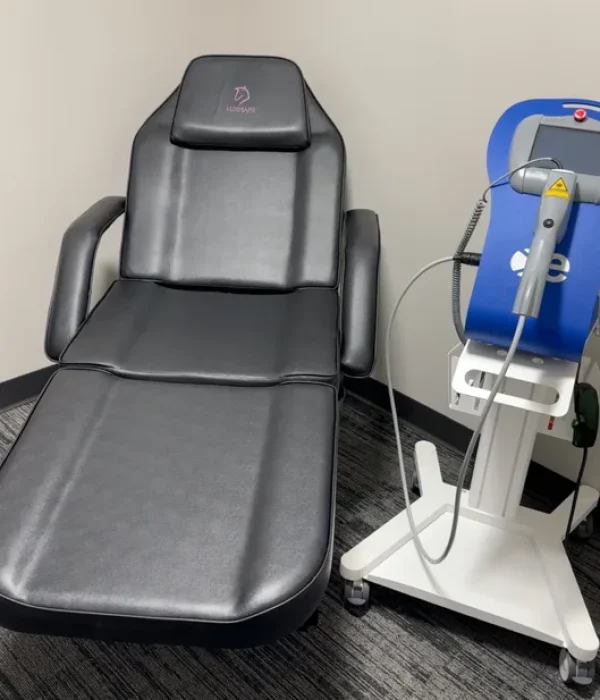
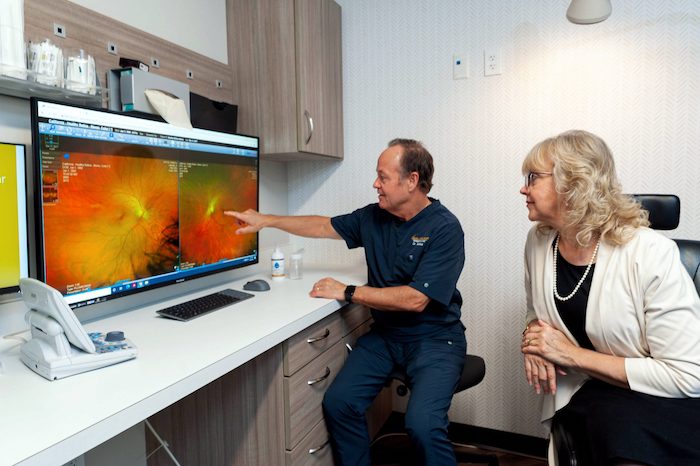
At Kehoe Eye Care, we’re committed to helping you see clearly and stay ahead of eye health challenges—no matter your age or risk factors. For decades, our experienced optometrists have served the Galesburg, Monmouth, and Galva communities with attentive, personalized care.
Using advanced diagnostic technology, we evaluate and manage a wide range of ocular conditions—from common concerns like dry eye and myopia to progressive diseases such as glaucoma, cataracts, and macular degeneration.
Whether you’re managing diabetes-related vision changes or seeking early detection for age-related eye diseases, our team will guide you with expertise and compassion. We’ll take the time to explain your condition, walk you through your options, and build a treatment plan tailored to your lifestyle and goals.
Explore the conditions we treat below, and learn how Kehoe Eye Care can help protect your vision now and for years to come.
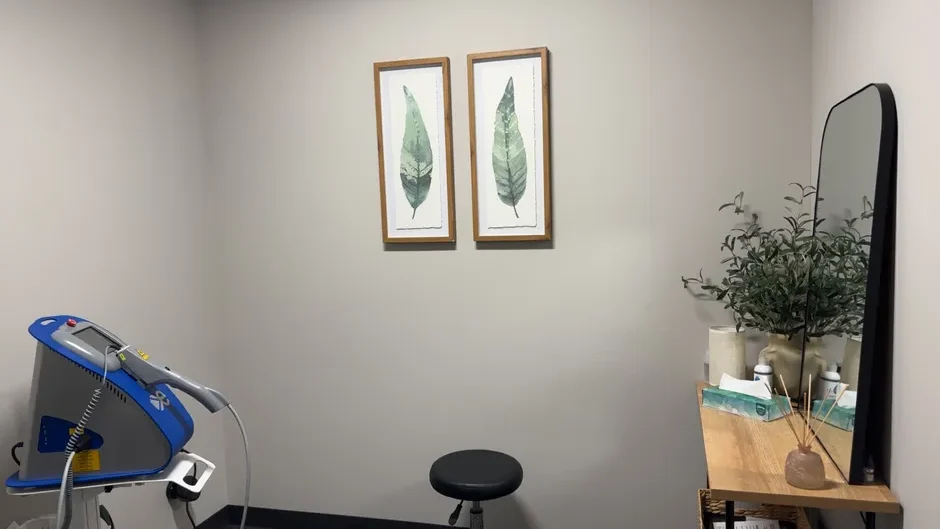
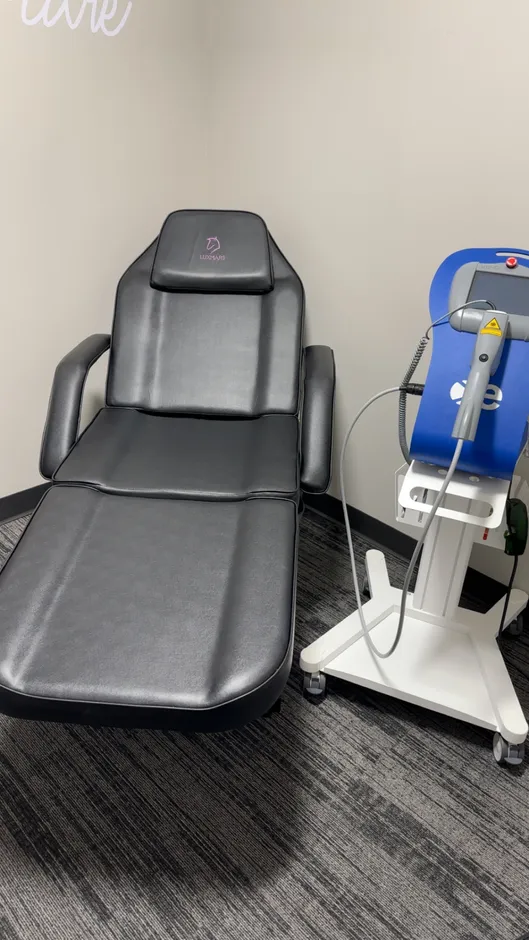
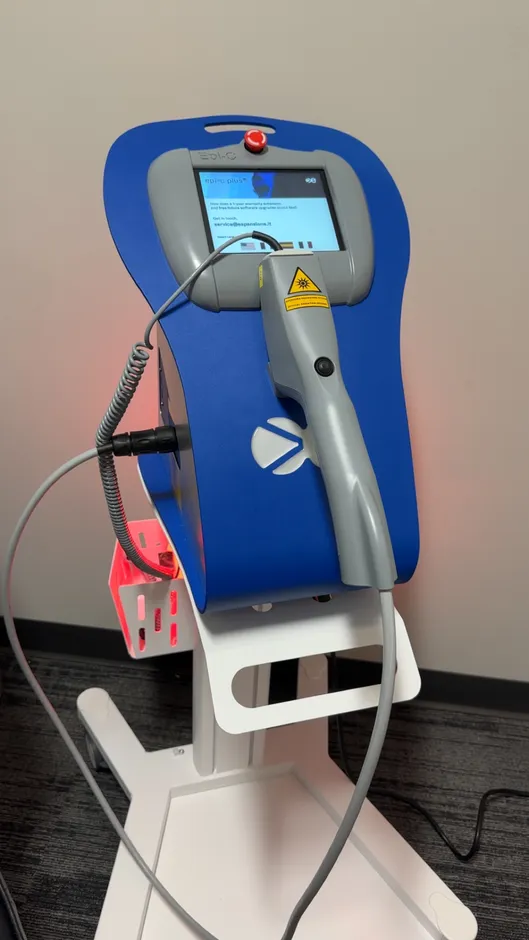
Dry eyes affect millions of people in the United States. It is estimated that as many as 4.88 million Americans over the age of 50 suffer from this uncomfortable condition.
If you need help, book an appointment at Kehoe Eye Care. We’ll help you find a treatment option that brings you the relief you’re searching for.
Everyone experiences dry eye differently because there are so many potential underlying causes.
Typical symptoms include:
There are many potential causes of dry eye.
In some cases, the cause is obvious, such as environmental irritants or short-term inflammation.
Some of the other causes of chronic dry eye problems include:
Because the underlying causes vary, treatment methods after diagnosis will also vary according to the patient. It is also not uncommon for there to be more than one cause for dry eye.
Through imaging of the meibomian glands, measuring osmolarity of the tear film, and screening for certain conditions, we are able to diagnose and provide treatment for the condition.
Some of the typical treatments include:
If an infection is causing the issue, low-dose antibiotics may also be prescribed.
LLLT is a gentle, non-invasive light treatment used to improve overall eye comfort and support healthy tear production. It’s especially helpful for patients dealing with dry eye, inflammation of the eyelids (like blepharitis), and meibomian gland dysfunction. The therapy uses specific wavelengths of light to stimulate natural healing at the cellular level, reduce inflammation, and improve the function of the glands around your eyes. Treatments are quick, comfortable, and require no downtime—making LLLT a safe and effective option for long-term relief from dry, irritated eyes.
IPL therapy is a safe, non-invasive treatment that uses pulses of light to target inflammation around the eyes—especially for patients with dry eye, rosacea, or meibomian gland dysfunction. By gently heating and stimulating the oil glands in your eyelids, IPL helps improve tear quality and reduce uncomfortable symptoms like burning, redness, and irritation. Treatments are quick, with little to no downtime, and many patients notice a significant improvement after just a few sessions. IPL is a powerful way to treat the root causes of chronic dry eye, not just the symptoms.
Dry eyes are not only uncomfortable — they can also be bad for the health of your eyes. Book an appointment at Kehoe Eye Care to find relief.
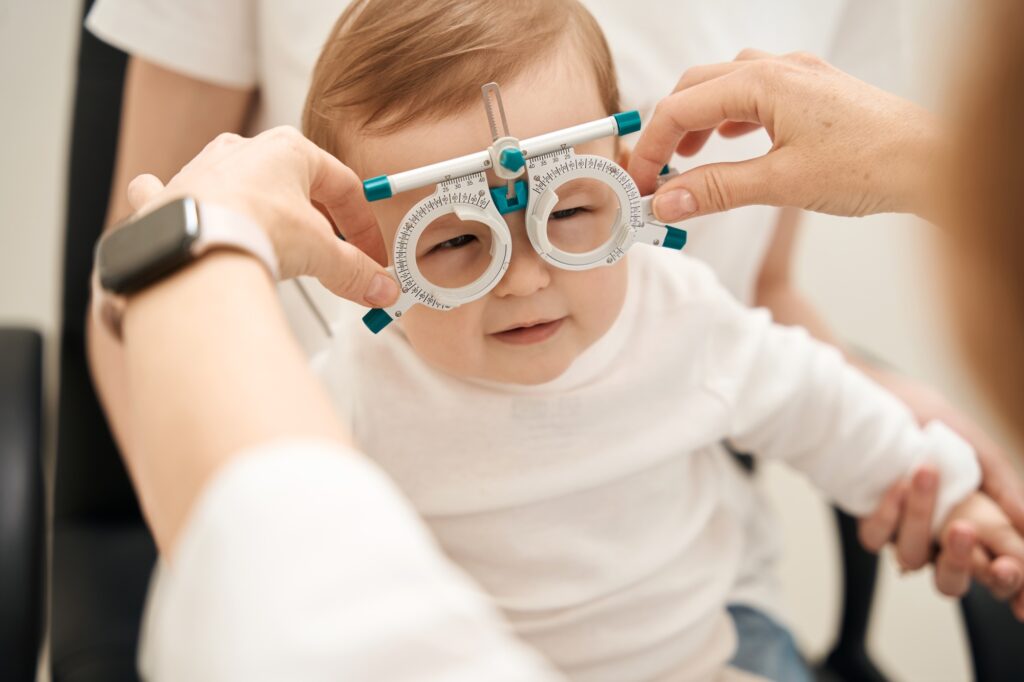
Does your child have difficulty seeing distant objects?
Myopia (nearsightedness) typically starts to develop in childhood and often progresses until about age 20.
Slowing the progression is important because it may reduce the risk of developing serious eye conditions later in life such as cataracts, glaucoma, retinal detachment, and blindness.
There are several treatment options to slow the progression of myopia. Schedule an exam at Kehoe Eye Care to learn more.
Nearsightedness is a growing concern in the US and other countries.
It is estimated that by the year 2050, roughly half of the world’s population will be affected by this eye condition.
Many researchers believe the rise can be attributed to more time spent staring at screens and less time outdoors.
Determining a myopia control plan for your child starts with a visit to your eye doctor. Schedule your appointment now.
Kehoe Eye Care uses the following in controlling myopia in pediatric patients:
What if you could correct your eyesight and reduce your dependence on corrective lenses, all while you sleep?
It may sound impossible. But for many, it’s a reality with orthokeratology (ortho-k).
Interested? Schedule an appointment with your eye care provider to learn more.
Ortho-k uses specially designed, gas permeable contact lenses to temporarily reshape your cornea while you sleep.
The result is clear vision when you wake up and remove the lenses the following day. And that effect should last throughout the day.
The change in the shape of the cornea, as well as the vision correction you experience, will revert when you stop using the lenses.
Ortho-K is most commonly used to temporarily correct myopia (nearsightedness).
In some cases, it can be used to correct lesser degrees of astigmatism and farsightedness.
To find out if ortho-k is right for you, get in touch with your eye care provider.
Only your eye care provider can answer that question.
However, most people with mild to moderate myopia are good candidates.
The treatment is highly preferred for people who have issues wearing eyeglasses or contact lenses.
Want to learn more about your options? Schedule an appointment at Kehoe Eye Care to see if orthokeratology is right for you.

Does your child have trouble seeing objects clearly at a distance?
Myopia, or nearsightedness, is a very common vision problem for kids. If not addressed, it often worsens as your child gets older. (1)
96% of childhood-onset myopia worsens as the child grows. (2)
The good news is there are solutions to slow the progression of myopia in age-appropriate children.
MiSight® 1 day soft contact lenses are specifically designed for myopia control and are FDA approved* to slow the progression of myopia in children aged 8-12 at the initiation of treatment. (2, ‡)
Talk with us to see if MiSight® 1 day is an option for your child.
*Indications for use: MiSight® 1 day (omafilcon A) soft (hydrophilic) contact lenses for daily wear are indicated for the correction of myopic ametropia and for slowing the progression of myopia in children with non-diseased eyes, who at the initiation of treatment are 8-12 years of age and have a refraction of -0.75 to -4.00 diopters(spherical equivalent) with ≤ 0.75 diopters of astigmatism. The lens is to be discarded after each removal.
† Only FDA-approved soft contact lens designed for myopia control in the U.S.
‡ Compared to a single vision 1 day lens over a 3-year period.
¶ By one month. As reported by parents.
References:
Age-related macular degeneration (AMD) is the leading cause of blindness in men and women over age 50.
Even though AMD is common among older people, it’s not as well known as cataracts — another eye disease that occurs more often with age. But while cataracts can be treated and “cured,” there’s no cure for AMD. Instead, people who have AMD require treatments that help slow the progression of the disease, which is why early detection is very important.
If you are concerned about macular degeneration, call Kehoe Eye Care or schedule your appointment online.
Age-related macular degeneration — abbreviated as AMD — is a disease of the retina, the light-sensitive portion of your eye. The retina is located at the back of the eye, and the macula is a small area near the very center. Your macula is responsible for your central vision.
In AMD, the macula loses its ability to detect light, resulting in a partial or total loss of central vision. People with late-stage AMD are unable to see objects straight in front of them, making it difficult to perform many activities, like using a computer, reading, driving, or recognizing faces.
AMD typically causes no symptoms until vision begins to fade. Having routine eye exams, especially over age 50, is important for catching AMD as early as possible.
Age is the biggest risk factor for AMD, followed by having a family history of AMD. You’re also at greater risk of developing AMD if you are:
One of the most important things you can do is have regular eye exams to monitor the health of your retinas.
Taking specific “eye vitamins” may help slow the progression of AMD, and it’s also important to take care of your overall health. Quitting smoking, exercising regularly, maintaining a healthy weight, and controlling your blood pressure and your cholesterol are important lifestyle changes you should consider.
You should also wear sunglasses that protect you from UVA and UVB rays and use blue light protection when operating a computer or your cell phone.
AMD occurs in different stages, and there are two types of AMD: dry and wet. The dry type is much more common, but the wet type is more severe and also develops more quickly.
If you have the wet form of AMD, medications or laser therapy may help slow your vision loss. Otherwise, treatment focuses on monitoring the progression of the disease, along with taking nutritional supplements and incorporating the lifestyle changes listed above.
Dilated eye exams allow your eye doctor to look at your retina so they can check for changes associated with AMD, and until recently, those exams were the only tool eye doctors had to detect this disease.
Today, there are more advanced computer-based options that enable your eye doctor to identify the very earliest signs of AMD. At Kehoe Eye Care, we offer the following for diagnosis:
Optomap® uses special scanning technology to capture a detailed image of your retina. With Optomap® technology, your eye doctor can see as much of the retina as possible, including the peripheral areas where the first signs of AMD are most likely to occur. Plus, Optomap® provides cross-sectional images of the important structures of your retina, making it possible for your doctor to see the subtlest, earliest changes associated with AMD. The scan takes less than a second, and it’s completely noninvasive.
RetEval is a quick, comfortable, and non-invasive test we use to check the health of your retina. It helps us detect early signs of diabetic retinopathy and other retinal conditions—often before you notice any symptoms. The test takes just a few minutes and doesn’t require dilation, making it an easy way to stay on top of your eye health
At Kehoe Eye Care, we want all our patients to enjoy the best possible vision at every age. To learn more about AMD screening in Galesburg, Monmouth, and Galva, or to schedule an eye exam, give us a call or book your appointment online.
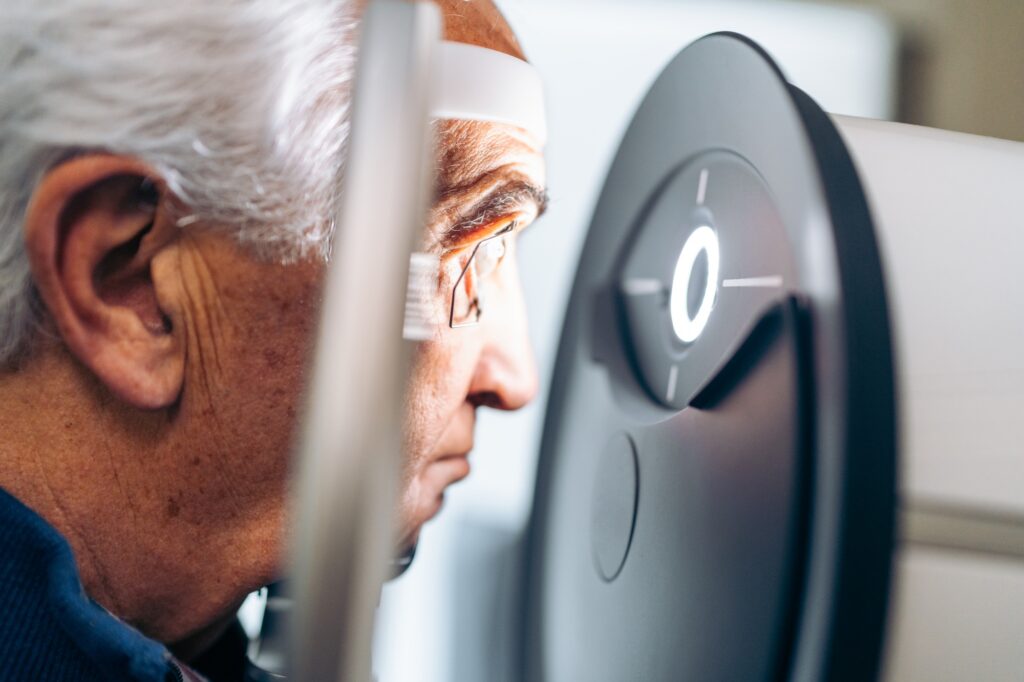
Glaucoma is a group of eye conditions that damages the nerve connecting the eye to the brain. Left untreated, glaucoma can result in permanent blindness in just a few years. The seriousness of this common eye disease underscores the importance of having regular eye exams.
If you haven’t seen an eye doctor within the past year, call Kehoe Eye Care today or schedule an appointment online.
Glaucoma is an eye disease that causes damage to your optic nerve. It typically results from a build-up of fluid in the front part of the eye. The pressure caused by this extra fluid damages the optic nerve, leading to blindness.
There are two primary types of glaucoma: open-angle and angle-closure.
Open-angle glaucoma (a.k.a. wide-angle glaucoma) is the most common. With this type of glaucoma, your eye’s drainage system looks normal but the fluid doesn’t leave the eye as it’s designed to do.
Angle-closure glaucoma is more common in Asia than in Western countries. It is also sometimes called chronic angle-closure glaucoma or narrow-angle glaucoma. This type of glaucoma is marked by the drain space between your cornea and iris narrowing. This can cause your intraocular pressure to suddenly buildup. Farsightedness and cataracts are also associated with this type of glaucoma.
Glaucoma doesn’t usually display any symptoms in the early stages, which is why early detection during yearly eye exams is essential.
The following are some common symptoms of glaucoma:
Anyone can develop glaucoma. But in most cases, it affects adults age 40 and older.
Other risk factors include:
During an eye exam, your eye care provider will check your eye pressure and dilate your pupils to examine the back of your eye, including the optic nerve. You’ll likely also undergo tests such as a visual field exam to check your peripheral vision.
If you do have glaucoma, the treatment plan will depend on the severity of the condition. Typical options include eye drops, laser surgery, or microsurgery. The least invasive treatment is preferred, but severe cases may require surgery immediately in order to alleviate fluid blockages.
At Kehoe Eye Care, we partner with you to protect the health of your eyes and your vision. Learn more about glaucoma by calling our offices or by scheduling an appointment online.
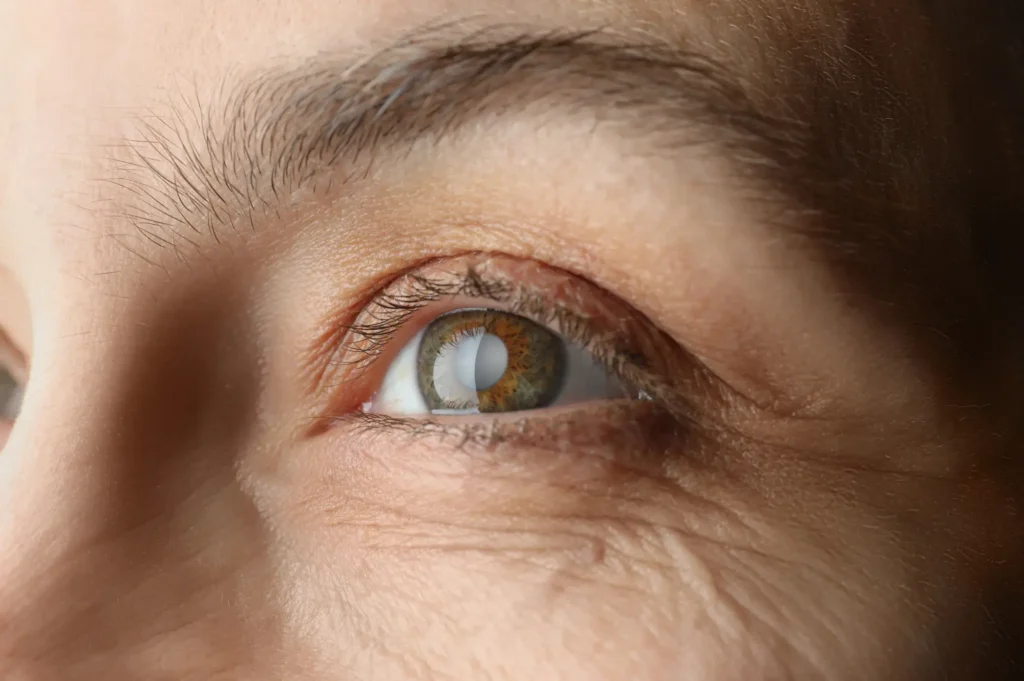
Cataracts are probably the most well-known eye condition associated with age. By the age of 80, more than half of all people living in the US either have a cataract or have undergone cataract surgery.
If you notice any unusual or unexplained changes in your vision, call Kehoe Eye Care or schedule an appointment online.
Inside your eye, there is a natural lens that is normally clear. Over the years, changes in the eyes lead to the breakdown of the lens’ proteins, causing them to become cloudy. When viewing things through a cataract, items may appear hazy, blurry or less colorful.
In general, cataracts develop in both eyes, though not always evenly. Because the cataract in one eye might be more developed than in the other, there could be a marked difference in vision.
In addition to the vision changes noted above, other symptoms of cataracts include:
While cataracts are a common condition associated with aging, there are other risk factors that could increase your chances of developing them or having them appear earlier in your life.
Risk factors include:
There is also a strong genetic factor regarding the development of cataracts. If your parents, siblings, or other family members have cataracts, your chances of also getting them increases.
While cataracts are a part of the natural aging process for many people, there are still a number of strategies you can implement that could help slow their progression or prevent them from developing earlier in your life.
This is the main way to keep your eye health in check. Only during a comprehensive eye exam can your optometrist detect early signs that could point to the development of cataracts. During your appointment, your eye doctor may go over some lifestyle changes that could improve the health of your eyes if there are changes to the eye’s lens.
The sun’s powerful ultraviolet rays can contribute to the development of cataracts. When you’re out in the sun, make sure to wear sunglasses that block UVB rays as well as a hat.
Eating a healthy diet that consists of lots of vegetables and fruits can help you maintain a healthy weight while also providing your eyes with the vitamins and minerals they need. If you drink alcohol frequently or in excessive amounts, cut back or stop altogether. Smoking can also have a detrimental effect on your eyes’ health. Quitting can help prevent eye diseases.
Your eye doctor is the only one who can provide a definitive diagnosis of cataracts. There are several tests that can assist in this diagnosis, including a slit-lamp exam, visual acuity test, and retinal exam.
During the early stages of the disease, the changes in vision associated with cataracts can often be addressed by using prescription glasses. When this strategy to clear your vision is no longer working, surgery is often the next step.
At Kehoe Eye Care, we’re passionate about caring for the health of your eyes. Call or schedule an appointment online, and let us help you protect your vision.

According to the Center for Disease Control and Prevention, nearly one-third of adults over the age of 40 with diabetes have diabetic retinopathy. And the rates are even higher among African- and Mexican-Americans.
If you suffer from diabetes, call Kehoe Eye Care today or schedule an appointment online for a comprehensive eye exam.
Diabetic retinopathy is a serious complication of diabetes that affects your eyes. It is the number one cause of vision loss in diabetic patients.
Diabetic retinopathy is caused by damage to the blood vessels of the light-sensitive tissue at the back of the eye (retina). This causes bleeding, swelling, and abnormal blood vessel growth. The longer you have diabetes and the less controlled your blood sugar is, the more likely you are to develop this eye condition.
Like many other eye conditions, diabetic retinopathy often causes few (if any) symptoms in the early stages. You may only notice minor vision issues that could be attributed to other causes. Left untreated, diabetic retinopathy can lead to blindness.
Due to the fact that anyone who has type 1 or type 2 diabetes can develop diabetic retinopathy, it’s important to have regular comprehensive eye exams.
The disease typically affects both eyes. As it gets worse, you may notice symptoms such as:
Management of your diabetes under the care of a medical professional — with a treatment plan that includes regular visits to the eye doctor — is the best way to prevent loss of vision.
Even if you are seeing your eye doctor on a yearly basis as recommended, if you notice the sudden appearance of the symptoms noted above, make an appointment right away.
Because diabetic retinopathy causes the retina’s blood vessels to bleed and grow abnormally, vision problems are common. You could experience one or more of the following complications:
The centers of your eyes are filled with a jelly-like substance that’s clear. Blood vessels formed by diabetic retinopathy could leak into this vitreous jelly and cause floaters or even block your vision completely.
The presence of abnormal blood vessels encourages the growth of scar tissue in the retina. This could pull the retina away from its position at the back of your eye. Common symptoms of a retinal detachment include flashes of light, severe loss of vision and/or spots floating in your vision.
If the abnormal blood vessels that mark the presence of diabetic retinopathy grow into your eye’s front area, they could block the normal flow of fluid from your eye. The result could be glaucoma which is an increase in the eye’s pressure. You might experience damage to the optic nerve if it’s left untreated.
Over time, diabetic retinopathy, or its complications, could cause you to completely lose your ability to see.
At Kehoe Eye Care, we are committed to helping our patients enjoy exceptional vision throughout their lifetime. Call us today or schedule an appointment online to learn more about diabetic retinopathy and how we can help.